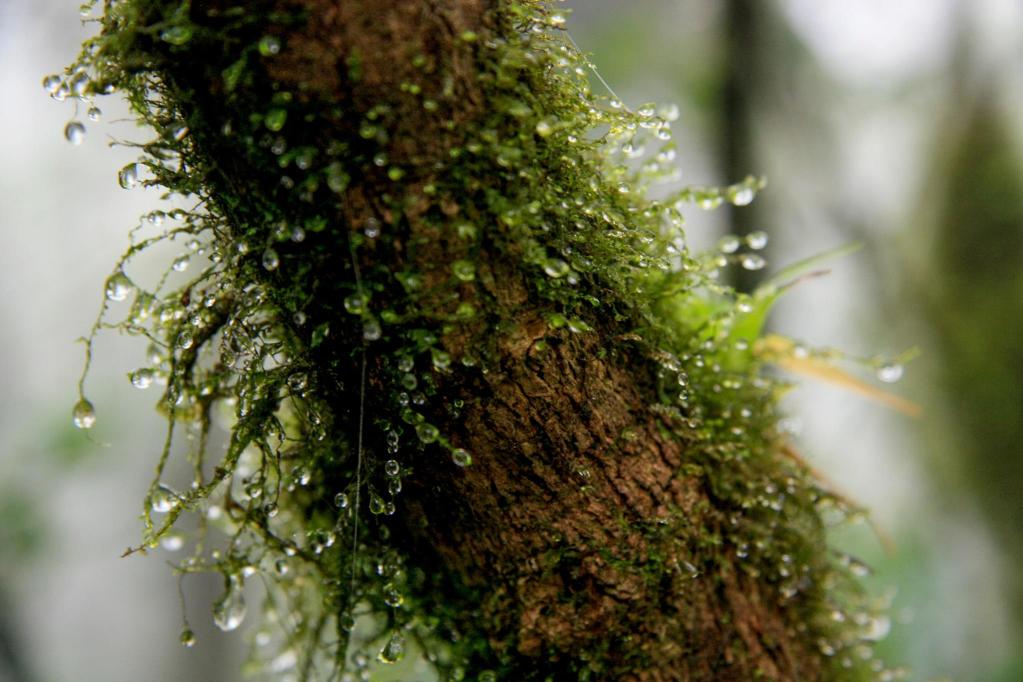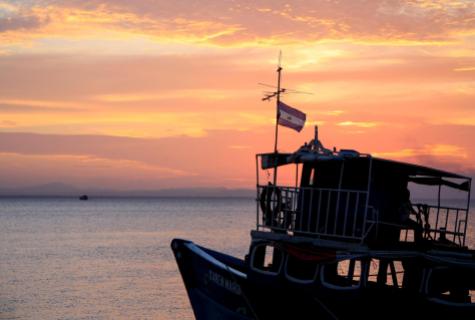 Ometepe, Nicaragua
Ometepe, Nicaragua
Ometepe is considered to be Nicaragua’s crown jewel. Every time I mentioned to a local that I’d be heading there, their face would just light up.
Conni and I attempted to take an early bus from Granada to Rivas, where the ferries to Ometepe depart from (actually, in San Jorge, a 5 minute taxi ride away from Rivas). We made our way to the bus station at 9:45 am, and when we asked the “conductor” (not the guy driving, but the guy who goes around the bus collecting fares from everyone) when it’d be leaving, he said “Ahorita!” (“Right now!”)
Well, “right now” meant waiting until 11:15 in a smelly bus lot, but anyway, we got going soon enough, with the usual rush of vendors hopping onto the bus trying to sell snacks, sunglasses, fake DVDs, drinks, whatever. (I’ve really grown to love the chaos.) Buses leave when full, and we were the first people on the bus.
We arrived in San Jorge just before a ferry was pulling out – or rather, a large rickety wooden boat. Waves of moderate size would splash plenty of water into the lower deck where we sat, and the engine operator was even pumping a flood of water out of the boat after some point. Hey, must be normal for them! He’s probably half-deaf by now too, working so closely to that incredibly loud engine.

The approach to Ometepe is a spectacular sight. The island is primarily consisted of the volcanoes Concepción (larger) and Maderas, then surrounded by a lake. Both of them have cloud forests at the top, where one dense cloud obscures the peak, meaning that the sight from far away looks not unlike two mushroom clouds, if it weren’t for the lush green colour of the island.
Disembarking in the town of Moyogalpa (on the Concepción side of the island), but wanting to head to Balgüe (on Maderas), we took a bus out to the junction town of Santa Cruz, then started walking the 3 km or so remaining, hoping to hitch a ride from someone. We weren’t able to, but we enjoyed the quietness of it all, with the random biking local passing by, the shore of Lake Nicaragua on our left, the humble abodes and farms lining each side of the road… Eventually, we caught a bus to Balgüe, where we met Chloe and Sam from Tasmania, who were headed to the same place to stay as we were.

Having done a bit of research beforehand and looking for something a bit more serene, Conni and I opted to head to Finca Magdalena, a 1.5 km walk uphill from Balgüe’s bus stop. A finca is basically a farm estate, and Finca Magdalena operates as a 24-family coffee farming collective that also offers accommodations in their farmhouse.
We arrived just in time for sunset, climbing to the top deck of the farmhouse – and what a view to take in! The lush farm garden in the foreground, Volcán Concepción with its poofy cloud, and the sunset colours reflected on the lake. Even considering everything else we were about to get, we already felt it was a great choice to stay!

Our lodging was humble and the cheapest I’ve ever paid in all of my travels – $3.50 per night for a military cot (folding slats of wood with a tarp pulled taut) in a dormitory. Not the most comfortable, but enough for the next few days. After our very long day of travel (9:45 am until 6 pm!), we just wanted some food – and the four of us sat down to a very fulfilling, farm-grown meal…and a nice cold beer. (Toña, Nicaragua’s most famous brand, is quite delicious and has German origins, apparently.)

With nothing to do at night due to our sheer isolation from everything and how dark it gets, I started sleeping early (8 or 9 pm) and waking up early (5 or 6 am), a habit that still hasn’t gone away. Waking up to the sound of roosters and a sliver of daylight peeping through the door (and well, other people waking up)… I think that’s really the way to go!

The next day, the four of us took a tour around the finca. Our guide, Evelio, briefly showed us some small plots of coffee plants, but the tour quickly diverted towards a trail with many petroglyphs and his recounting of stories and legends. His strong accent made it a bit difficult to understand, and with no historical record of what all the symbols actually mean, everything is vague speculation. From what they can tell, the island’s first residents were really afraid of demons, with them showing up in many petroglyphs. I have to say though, the “people” and “animals” are really squiggly figures. True guesswork! Evelio also mentioned a few details about how the natives were aware of having less children during times of food scarcity, and also kept reinforcing the concept of monogamy by singing (and leaf-whistling) old folk songs – although whether the now-Catholic nature of Nicaragua got unintentionally mixed into the native folklore is really something we weren’t so sure of!

Explaining that he had been affiliated with the finca for about 9 years now (since the beginning of their opening towards tourists), Evelio mentioned his own interests, especially in the study of botany, all the while enjoying taking visitors around and encouraging the concept of “eco-tourism”. Brings money to the locals, plus it gives people a chance to learn more about the local culture. Win-win! He identified some interesting trees, passed us some leaves (the coffee leaf does not smell like coffee at all, but it’s got a strong pungent smell), and later showed us the finca’s sorting and milling facilities.
After a long rest to avoid the hot early afternoon sun, Conni and I rented bikes to head to Ojo de Agua, a natural spring turned touristy pool in a scenic, forested spot about 30 minutes away. The ride was certainly very scenic, and it passed by the long shoreline of Playa Santo Domingo (which we stopped a few times at for pictures, but not to swim), but with all the hills and the heat, we were pretty glad to jump right into the cool water. By the time we returned to the finca, it was dark – and here, dark really means dark. Can’t even see your hand in front of you, especially when the power randomly decides to go out!
Finca Magdalena sits at the feet of the shortest trail up to Volcán Maderas; the next day, I decided to join a group to climb up to the top, a journey that averages 8 hours there and back. Leaving a bit late at 8:30 (to avoid the heat later on, people usually leave at 7), we hustled. The trail starts out alright, first stairs, then just rocks… but then about halfway up, ascending through the moist cloud forest, it becomes all mud. Totally wrecked my street shoes there!
All our efforts were in vain though, at least for a view – the cloud shrouded the entire peak and all we could see was the fog when we were at the top. Granted, the forest itself is beautiful, but we went by so fast that we barely caught sight of the many inhabitant birds, monkeys, and flowers too! That was really a shame. At least the lagoon in the now-dormant crater had a nice eerie feel to it. Halfway down, the clouds finally cleared enough to provide a decent view of Concepción. Still…having never been that messy in my entire life, I admit it was a bit of a letdown, although good exercise. My socks are permanently stained.


Well, the hike left me sore for a few days. (Having to keep your balance for so long, then later, running down the rocky stretch because you’re too tired to resist gravity…)
Unable to move, I spent the afternoon sitting on the deck watching the cloud slowly reform over Concepción, then the sky behind it change colour through the sunset. Absolutely mesmerizing.
On our last day in Ometepe (and last day travelling together), Conni and I slowly wandered the Sendero Cafetal by the finca…and somehow didn’t manage to find any coffee. Oh well! We soon headed to Moyogalpa, the town with the ferry departures, for our final night, where we found ourselves back in civilization. After a few days with no internet, I hit up a cybercafe, while she managed to finagle a haircut for the equivalent of $1.50. Crazy! The island gave us one last hurrah in the form of a magnificent sunset, and we left and parted ways in the morning.

I’d definitely love to come back here someday. Not just to see the other sides of the island, but the rich scenery, great coffee, many activities, slow pace, and the sense of disconnect… that’s what I really cherish.

